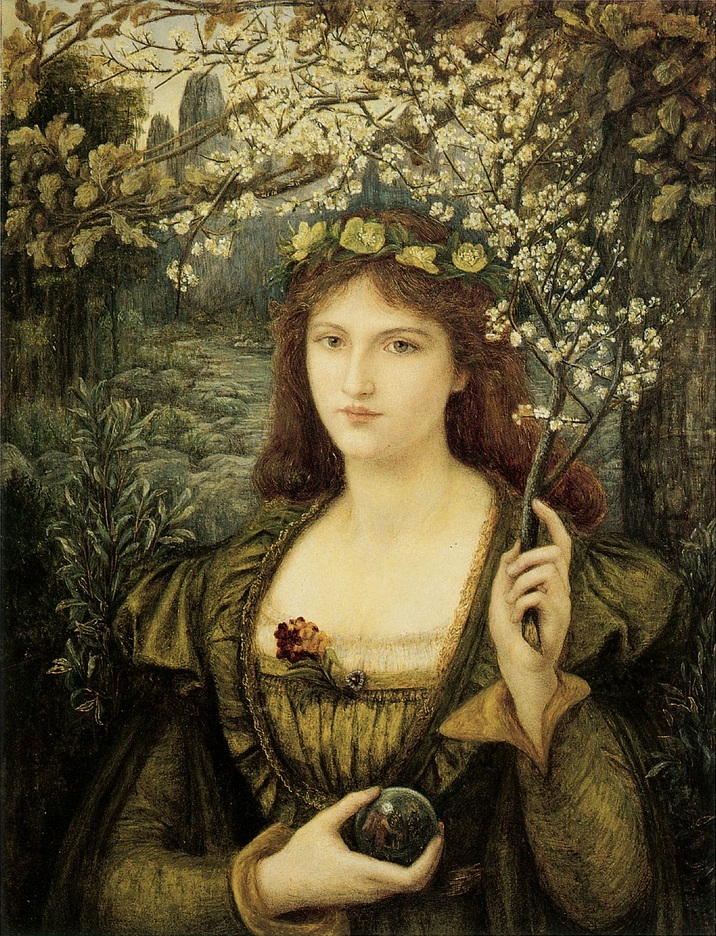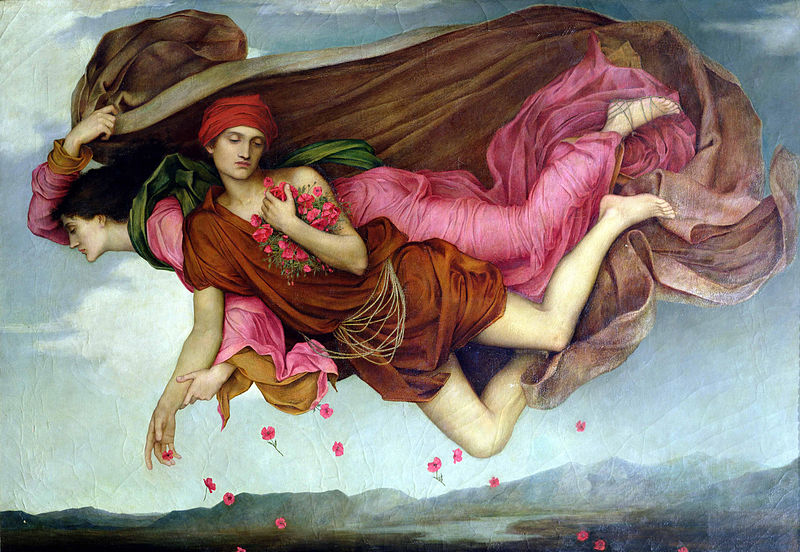One of the most talked-about shows of the year is currently on view at London’s National Portrait Gallery. Running through January 26, 2020, Pre-Raphaelite Sisters hopes to turn the spotlight onto the often-overlooked women of the Pre-Raphaelite movement.
The Pre-Raphaelite Brotherhood was formed in Britain in 1848 by a group of men who rejected the academic artistic sensibilities of the time. The best, most true form of painting, they thought, was that from before the Renaissance–hence their name.

Though a few of their famous early works did have a more moralizing tone, the movement is characterized by primarily historical scenes verging on the ethereal featuring women, many of whom were romantically involved with their painters. (To quote Frieze: “Think ‘Pre-Raphaelite’ and you picture luminous paintings of waify maidens with copper-coloured hair, tantalizingly loose clothing and a far-off look in their eyes.“) Despite featuring women as their subjects, though, the movement had little room for women in their ranks–a fact criticized at the time by Christina Rossetti, sister of prominent Pre-Raphaelite Dante Gabriel Rossetti. She roasts the Pre-Raphaelites’ sensibilities in her poem “In An Artist’s Studio,” as only a sibling can:
One face looks out from all his canvases,
One selfsame figure sits or walks or leans:
We found her hidden just behind those screens,
That mirror gave back all her loveliness.
A queen in opal or in ruby dress,
A nameless girl in freshest summer-greens,
A saint, an angel — every canvas means
The same one meaning, neither more or less.
He feeds upon her face by day and night,
And she with true kind eyes looks back on him,
Fair as the moon and joyful as the light:
Not wan with waiting, not with sorrow dim;
Not as she is, but was when hope shone bright;
Not as she is, but as she fills his dream.
Which is why Pre-Raphaelite Sisters is an important exhibition: for the first time, the women that arguably made these men famous are getting their due. From those who struggled as artists and writers to those who acted as models (or both), the exhibition seeks to shed light on these women and their importance to the movement, proving that a number of them were far more than just pretty women.
Who’s included? As a literal Pre-Raphaelite sister, poet Christina Rossetti understandably gets a large share of the exhibition’s focus. Artists Marie Spartali Stillman, Evelyn de Morgan, and Maria Zambaco–all artists on the fringes of the Brotherhood whose work was never as recognized–are also prominently featured. Almost-famous models Effie Gray Millais, Annie Miller, Jane Morris, and Elizabeth Siddal (among others) are included as well, as the exhibit hopes to give viewers a context for their lives beyond their famous modeling stints. (Remember, modeling for artwork was still somewhat construed as improper for a woman. And there’s nothing the Pre-Raphaelites seemed to love more than playing up the “fallen woman” trope.) Siddal was also an aspiring artist, though she was never really able to break out from her role as a model.

Another notable woman featured is Jamaican-born Fanny Eaton, one of the few well-known models who “escaped a crossover role as a lover,” according to The Guardian–though her ethnicity made her a sought-after model for “exotic” scenes. To quote TimeOut: “Despite the obvious problems with that, her inclusion…challenges what’s considered [P]re-[R]aphaelite beauty,” which we’ve already established is abundantly waiflike, silent, and white.
Reviews for the exhibition are mostly positive, though some point out that there’s still a large amount of works of these women by men in the exhibition, rather than creative output or primary sources from the women in question. Nonetheless, the effort is noteworthy: giving women artists the recognition they deserve in a museum space speaks to a trend that will hopefully become the norm as time moves on.
Discover more about the exhibition at the National Portrait Gallery’s website, and read reviews at TimeOut, The Guardian, and Frieze. Read more about the Pre-Raphaelites at the Tate, the Met, or the British Library.
What do we do here at the Art Docent Program? Find out more about us here!
Want more on cool museum exhibitions and gallery shows? Check out the rest of our blog!







